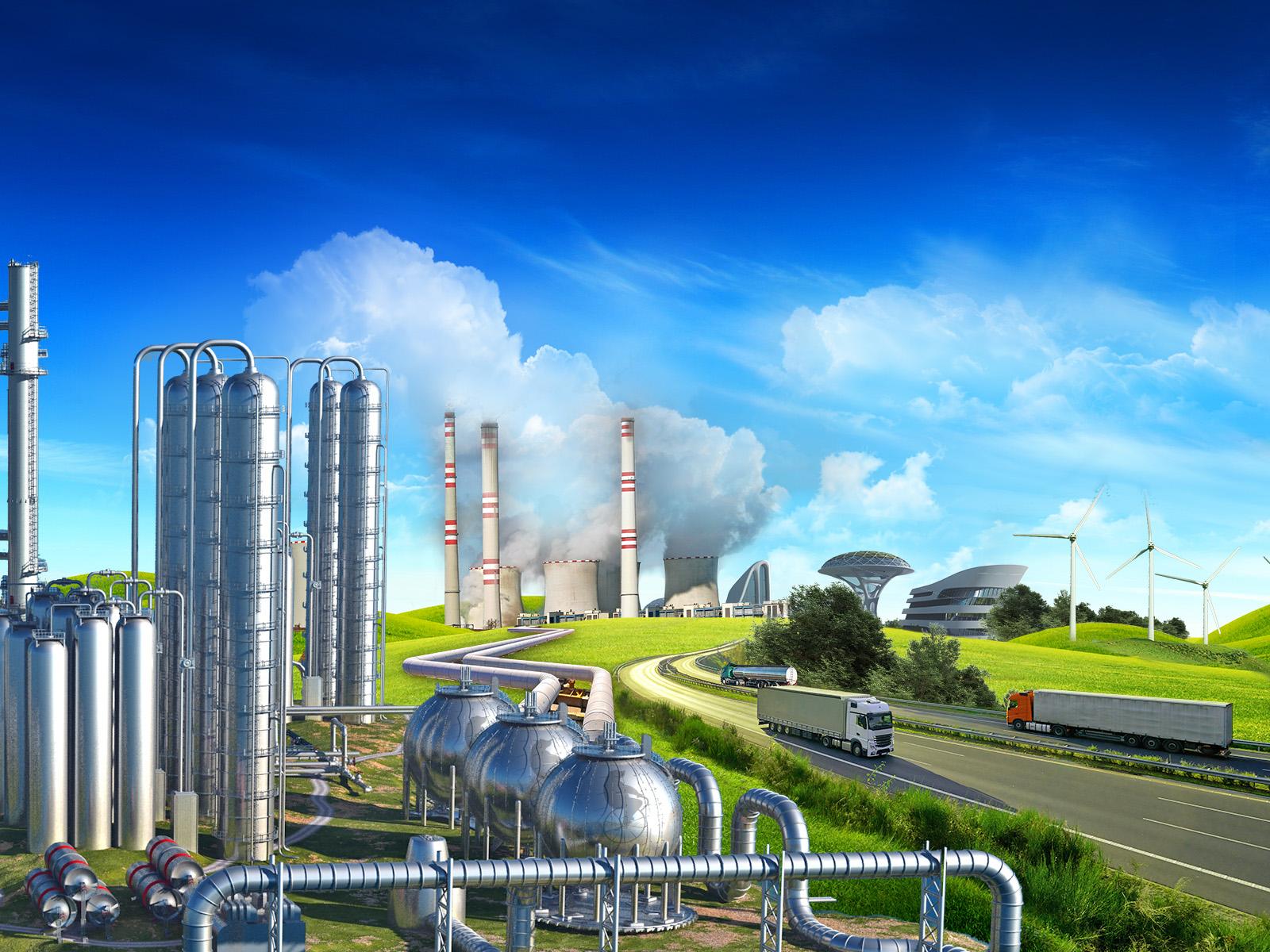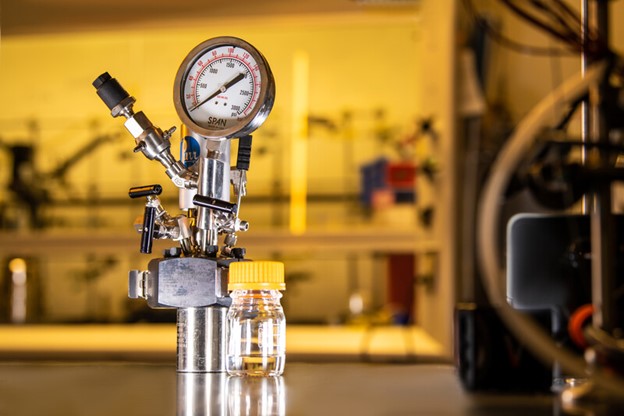Capturing, Utilizing, and Storing Carbon with Solvents: Outlining a Path Forward
Perspective article highlights research needs for improving carbon management and producing green products

Integrating systems that create and use carbon dioxide, including solvent-based carbon capture coupled with utilization and storage processes, will play a key role in a transition to a net zero carbon economy.
(Illustration by Cortland Johnson | Pacific Northwest National Laboratory)
Humans constantly use and emit carbon. In a net zero economy, carbon removal must balance out human emissions. This effectively adds no new carbon to the atmosphere. Reaching this net zero goal requires economically viable and scalable technologies to capture carbon.
Carbon capture solvents are among the most mature technologies for capturing and storing carbon dioxide (CO2). Currently used to help purify power plant exhaust, they represent the most scalable option for carbon capture at large emission sources. However, standard carbon capture remains too expensive for practical use at the large scales needed to meet net-zero targets.
In a new perspective article in Chemical Science, Pacific Northwest National Laboratory (PNNL) chemists and their collaborators outline research needs to create viable carbon capture systems. A key component is combining multiple previously separate processes: carbon capture, utilization, and storage (CCUS). In these systems, the solvent does more than just bond to emitted CO2. It can help push reactions to turn the CO2 into either a useful chemical or a stable solid for storage.
“CCUS is a dream for a lot of us,” said PNNL chemist David Heldebrant. “Right now, not all the necessary technologies are efficient or economical. Our work points to places where researchers can focus their efforts to make this dream a reality.”
The perspective describes clear benefits to an integrated approach. For example, capturing carbon generates heat, which can be used to drive other reactions that need heat. Combining processes can also streamline infrastructure and lower costs.
Developing plans for the near and long term

In the article, the team provides a CCUS research roadmap. In the near term, they suggest a focus on developing solvents that can facilitate the conversion of CO2 into valuable chemicals. This creates an economic incentive for emitters to capture their carbon.
While there is a substantial mismatch between generated CO2 and the demand for products that can be made from CO2, conversion into chemicals like methanol provides an important incentive for companies to invest in capture systems. The revenue from selling these commodities can be used to offset the cost of storing the remaining CO2 in deep geological reservoirs.
In the mid-term, CCUS needs to integrate with more types of systems as renewable energy becomes an increasingly prominent part of the grid. Carbon should be captured across remaining CO2 emitters, with conversion incentivized. The captured CO2 then needs to be used in full to create carbon-negative materials. These could be as durable polymer materials or feedstock chemicals like methanol.
A long-term goal of CCUS is the use of deep decarbonization applications like direct air capture, where a device pulls CO2 from the ambient atmosphere. These complex processes require advancing all parts of CCUS, including the catalysts needed for utilization or storage. Promising laboratory-scale results already exist for several deep decarbonization applications, but thus far none have been demonstrated at industrially relevant scales.
“We want to show that solvent-based carbon capture can enable carbon utilization and mineralization,” said PNNL chemist Jothi Kothandaraman. “Getting community buy-in is key and articles like this allow us to share our science-based perspective.”
The team plans to continue exploring CCUS strategies. “I believe integrated systems are key to unlocking economical CCUS,” said Heldebrant. “We’re going to continue designing new and better systems to trap and use carbon.”
This work was supported by the Department of Energy, Office of Science, Basic Energy Sciences, Chemical Sciences, Geosciences, and Biosciences Division.
Published: June 27, 2022